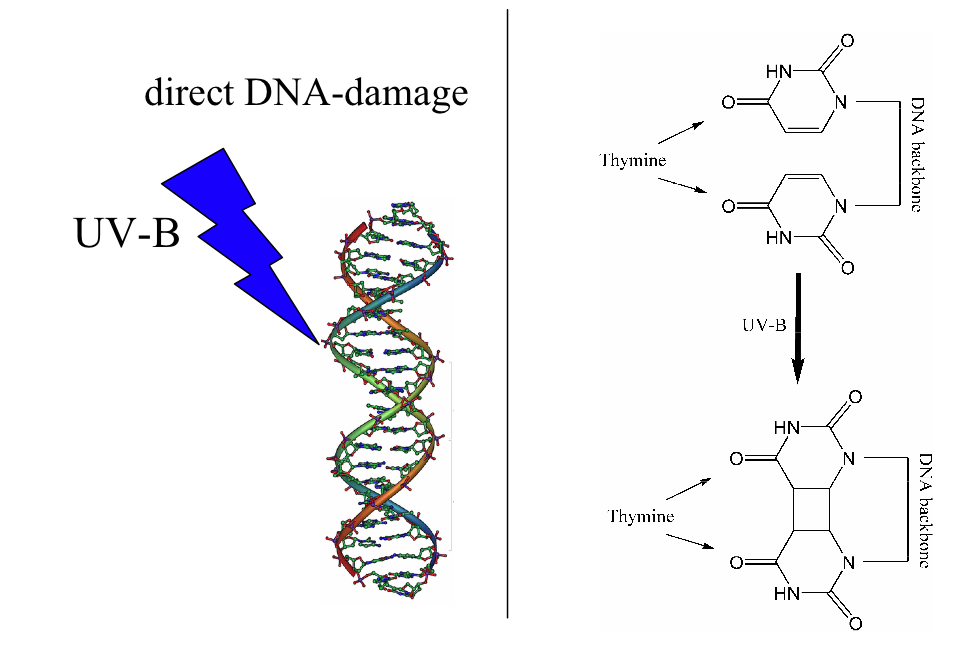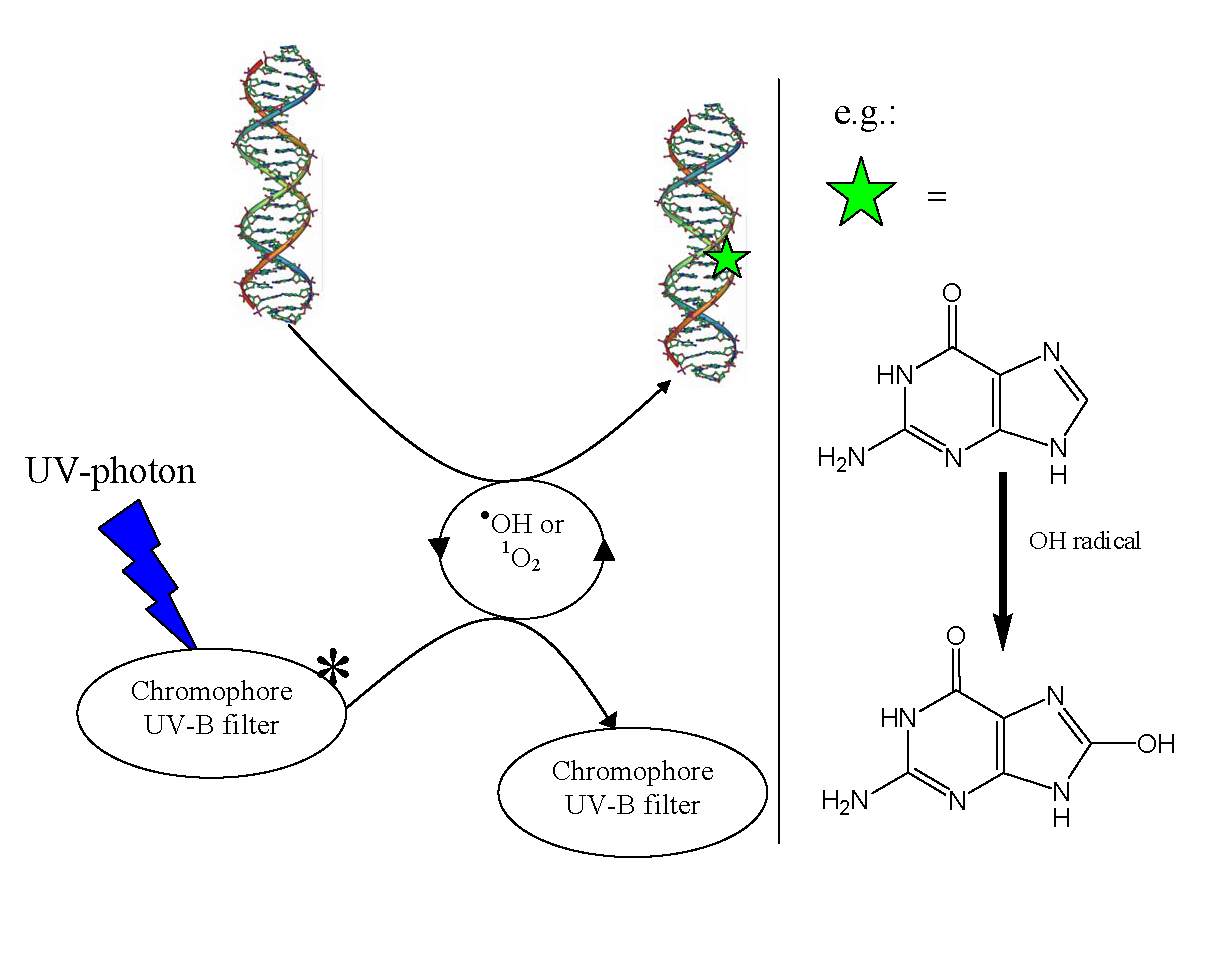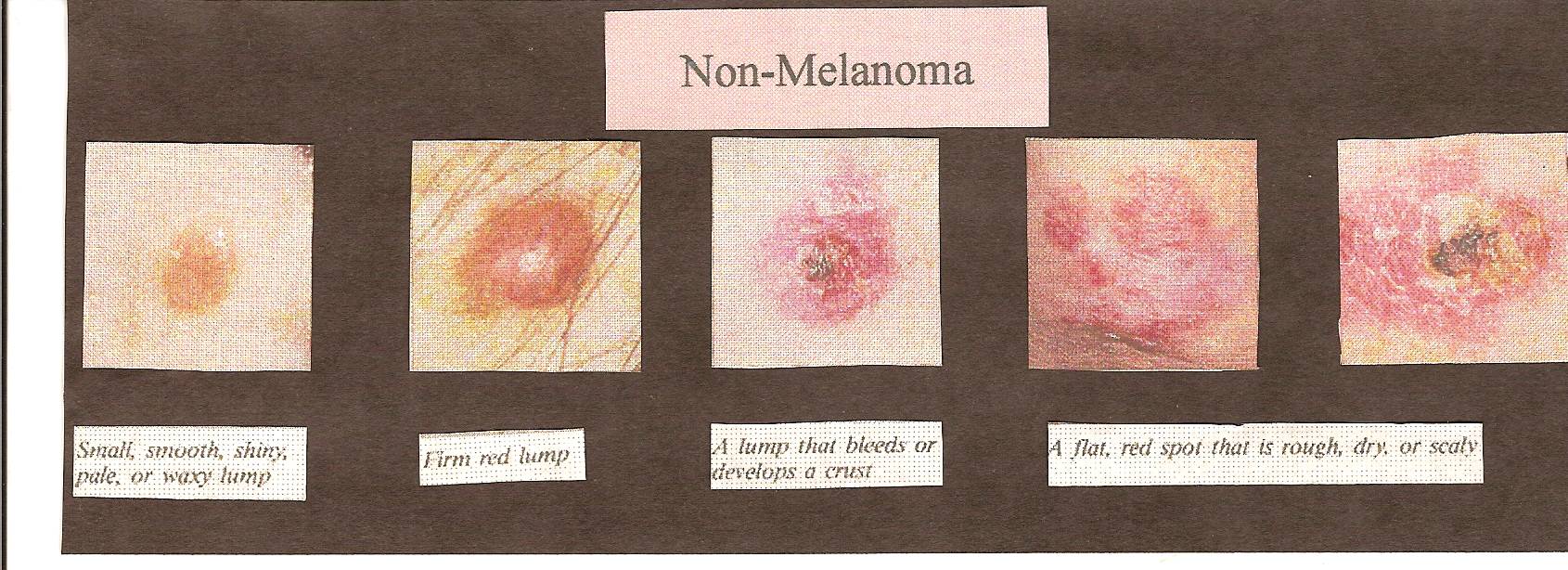Skin Cancer
Did you know that there are about one million new cases of skin
cancer
diagnosed each year in the United States
The survival rates depend on type, detection, and treatment plans. Most basal cell and squamous cell cancers if detected early and are treated can be treated with ninety-five to one hundred percent survival. Relatively quick and mild treatments for non-melanoma cancers include surgery, radiation or laser therapy, and electrodissection. Malignant melanoma can spread to other parts of the body quickly. If detected and treated early the five year survival rates range from ninety-five percent if localized to sixty-one percent if regionally metastasized to only sixteen percent if distant metastasized. Malignant melanoma requires longer and more intense treatments which can include: chemotherapy, biotherapy and wide excision surgery.
How does the suns’ radiant energy cause skin damage? Overexposure to UVB light can cause direct or indirect DNA damage. Photocarcinogenesis, or the light induced formation of melanoma, is considered to be the cause of direct DNA damage. The DNA directly absorbs the UVB light. Although DNA transforms ninety-nine point nine percent of the light into heat quickly, the last fraction causes extreme damage to the skin including sunburn and increased melanin production. The absorption spectrum of DNA and action spectrum of sunburn are almost identical; therefore, it is said that sunburn is caused by direct DNA damage of UVB radiation. The DNA’s nitrogen bases of thymine are then combine causing thymine-thymine dimers. The more sun exposure the more dimer production causing higher risk of melanoma. DNA is also indirectly damaged by the absorption of UVB light by chromophores which can not convert the energy quick or efficiently. This inefficient transfer of energy in turn creates hydroxyl radicals which hook onto the nitrogen bases of DNA.

Direct damage of DNA by the thymine-thymine dimer. Creating bonds between nitrogen bases.

Indirect DNA damage caused by the slow energy dispursion from the chromophores creating hydroxyl radicals. The radicals then attach to the nitrogen bases.
How can we identify if we have skin cancer? For non-melanomas you can look for a few distinguishing characteristics. Basal cell cancer often takes on the form of a pale, waxy, pearly nodule. Squamous cell cancers look like a red scaly outlined patch of dry skin.

To identify melanoma an ABCD rule, first devised by a group of dermatologists at NYU, was instituted. The letter E was added in 2004 by the same group as well as new member of the dermatological team.
ABCDE Rule |
What to Look For: |
Asymmetry |
One half of the mole does not match the other half |
Boarder Irregularities |
The edges of the mole ar ragged, notched, or blurred |
Color |
The pigmentation is not unifor or it is intensely black |
Diameter |
The size of the mole is grater than 6 mm, the size of a pencil eraser |
Evolving |
Size, Shape, Symptoms, Surface Bleeding, Shades of Color |

How can we help prevent skin cancer? Each person can be responsible for protecting themselves from the sun. Limit the amount of sun exposure during the day to ten to fifteen minutes during non-peak sun hours (that means avoiding midday sun 10 a.m. to 4p.m.) will greatly reduce your risk. Wearing at least a 15 SPF sunscreen during extended hours in the sun and protective clothing such as wide brim hats and eye protection will increase your sun safety. Lastly but most importantly avoid sunlamps and artificial tanning in salons and check your skin regularly for any changes.
| Sunscreen Chemsitry |
Sunscreen verses Sunblock |
Vitamin D Synthesis |
| Discovery of Sunscreen | Active Ingredients |
Home |
| Portrait of the Sun | SPF |
Want to Learn More? |
| Ultra-Violet Radiation | Lesson Plans |